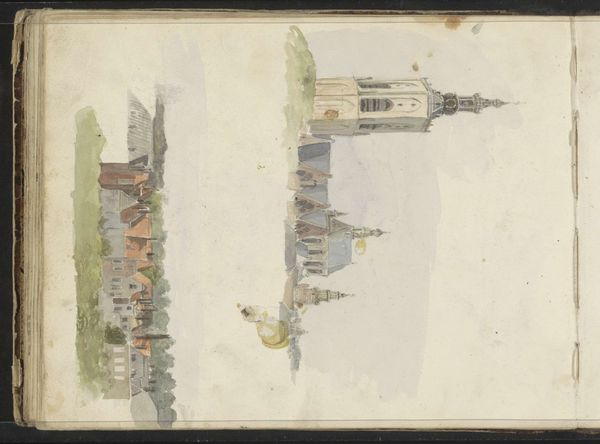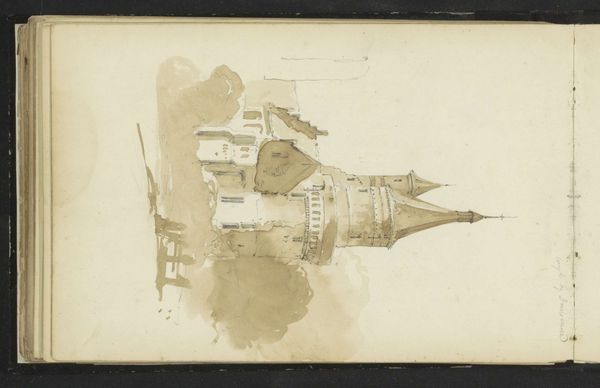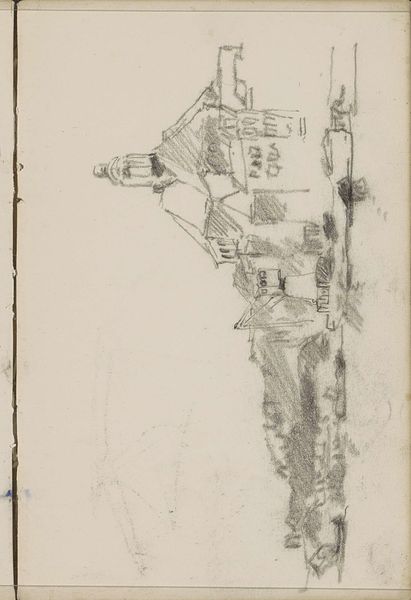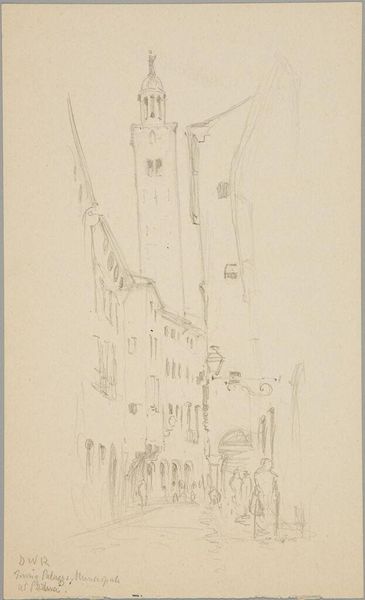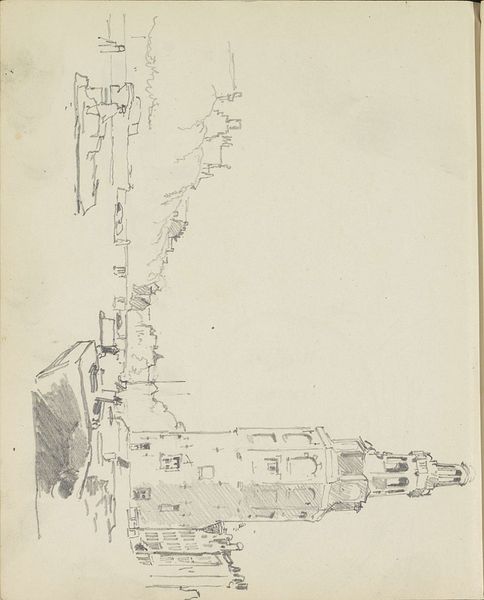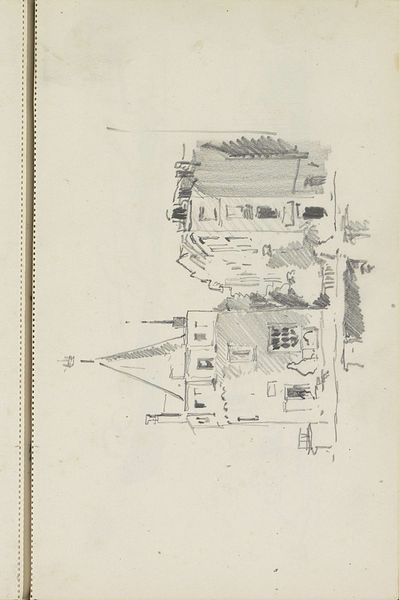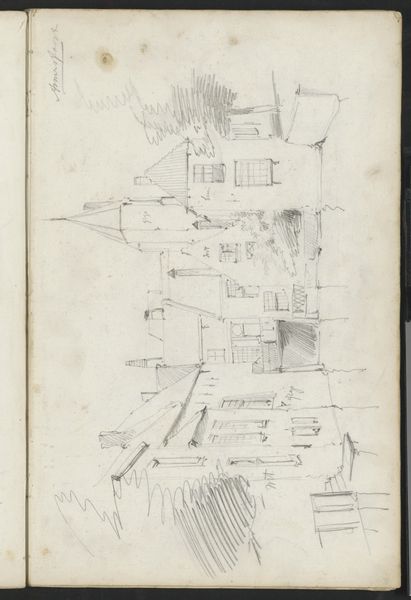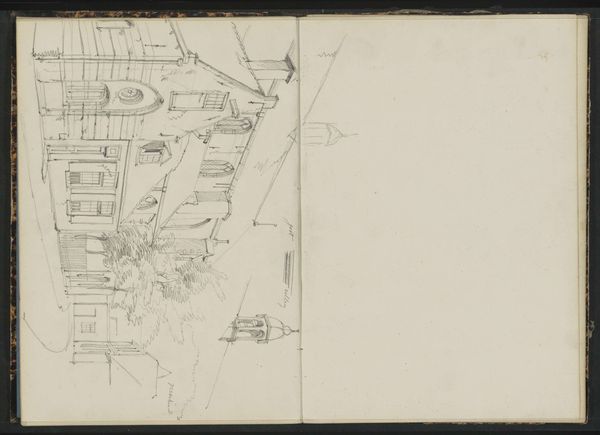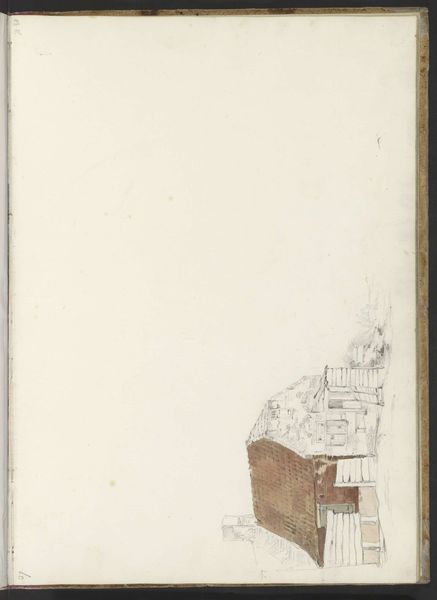
drawing, paper, watercolor, pencil
#
drawing
#
16_19th-century
#
ship
#
pencil sketch
#
landscape
#
paper
#
watercolor
#
coloured pencil
#
pencil
#
cityscape
#
watercolour illustration
#
watercolor
#
building
Copyright: Rijks Museum: Open Domain
Curator: This is Johannes Christiaan Schotel's "Kade bij de Groothoofdspoort te Dordrecht," a drawing rendered in pencil and watercolor, likely created between 1797 and 1838. Editor: It feels... incomplete, somehow. The architectural elements are strongly defined, but the overall impression is dreamlike and faded, especially toward the lower half. It’s a very muted palette, dominated by greys and tans. Curator: Indeed. The composition utilizes strong verticals – the gate, the implied masts of ships. Note the artist's hand in juxtaposing the detailed architectural renderings with more loosely sketched nautical forms. It plays with the viewer's eye, shifting between precision and suggestion. Editor: The gate, especially—the Groothoofdspoort. Gates, throughout history, have acted as liminal spaces; they control the flow between outside and inside, chaos and order. Given Dordrecht's prominent role in Dutch history, it suggests power, defense, perhaps even a subtle note of anxiety about external threats. Curator: And the mirroring effect created by the water adds another layer, destabilizing the structure’s apparent solidity. The reflections aren't perfect replicas; they introduce subtle distortions that question the fixed nature of the architecture itself. Editor: Right. Water is, after all, a potent symbol of change and fluidity. In the cityscape, that stable human architecture encounters natural, mutable elements—hinting at the fleeting nature of even our grandest designs. It almost reminds me of Vanitas paintings, prompting meditation. Curator: Interesting. Consider, too, the absence of human figures. This enhances the sense of quietude, but also forces the viewer to inhabit the space, to become the implied observer in this moment in time. Editor: So, from a seemingly simple cityscape, Schotel presents us with considerations about transition and permanence, solidity and the shifting flow of time, all carefully balanced within the composition. Curator: Precisely. Schotel invites a deeper contemplation, through understated, technical mastery. Editor: It’s far more evocative than I initially suspected!
Comments
No comments
Be the first to comment and join the conversation on the ultimate creative platform.
